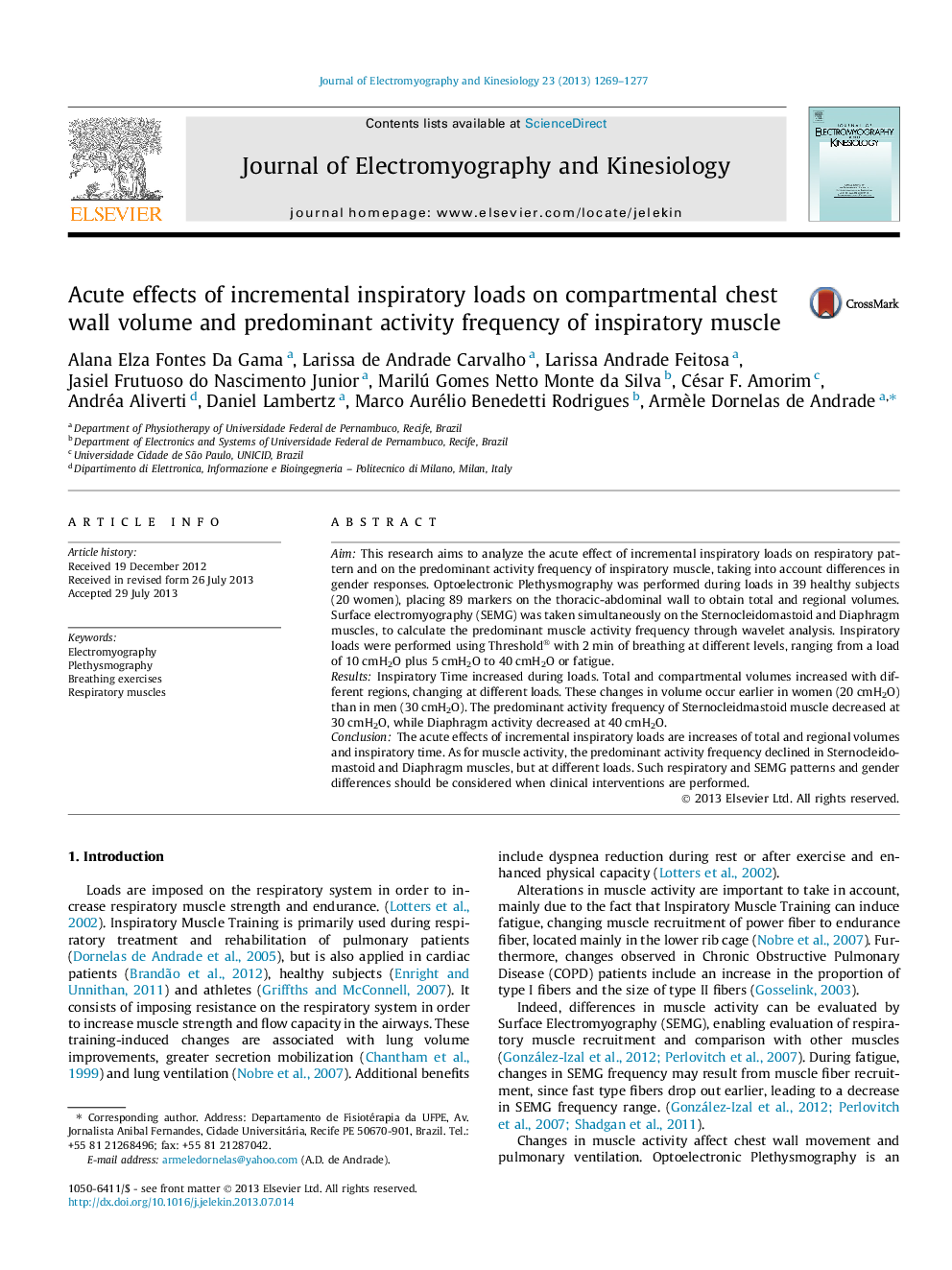| Article ID | Journal | Published Year | Pages | File Type |
|---|---|---|---|---|
| 4064800 | Journal of Electromyography and Kinesiology | 2013 | 9 Pages |
AimThis research aims to analyze the acute effect of incremental inspiratory loads on respiratory pattern and on the predominant activity frequency of inspiratory muscle, taking into account differences in gender responses. Optoelectronic Plethysmography was performed during loads in 39 healthy subjects (20 women), placing 89 markers on the thoracic-abdominal wall to obtain total and regional volumes. Surface electromyography (SEMG) was taken simultaneously on the Sternocleidomastoid and Diaphragm muscles, to calculate the predominant muscle activity frequency through wavelet analysis. Inspiratory loads were performed using Threshold® with 2 min of breathing at different levels, ranging from a load of 10 cmH2O plus 5 cmH2O to 40 cmH2O or fatigue.ResultsInspiratory Time increased during loads. Total and compartmental volumes increased with different regions, changing at different loads. These changes in volume occur earlier in women (20 cmH2O) than in men (30 cmH2O). The predominant activity frequency of Sternocleidmastoid muscle decreased at 30 cmH2O, while Diaphragm activity decreased at 40 cmH2O.ConclusionThe acute effects of incremental inspiratory loads are increases of total and regional volumes and inspiratory time. As for muscle activity, the predominant activity frequency declined in Sternocleidomastoid and Diaphragm muscles, but at different loads. Such respiratory and SEMG patterns and gender differences should be considered when clinical interventions are performed.
